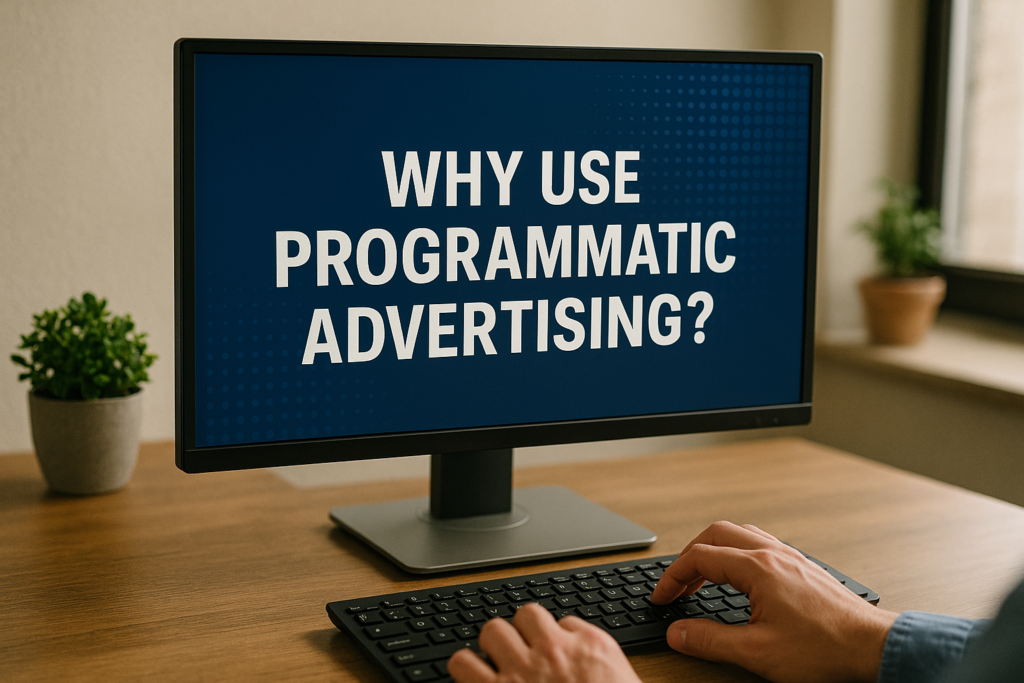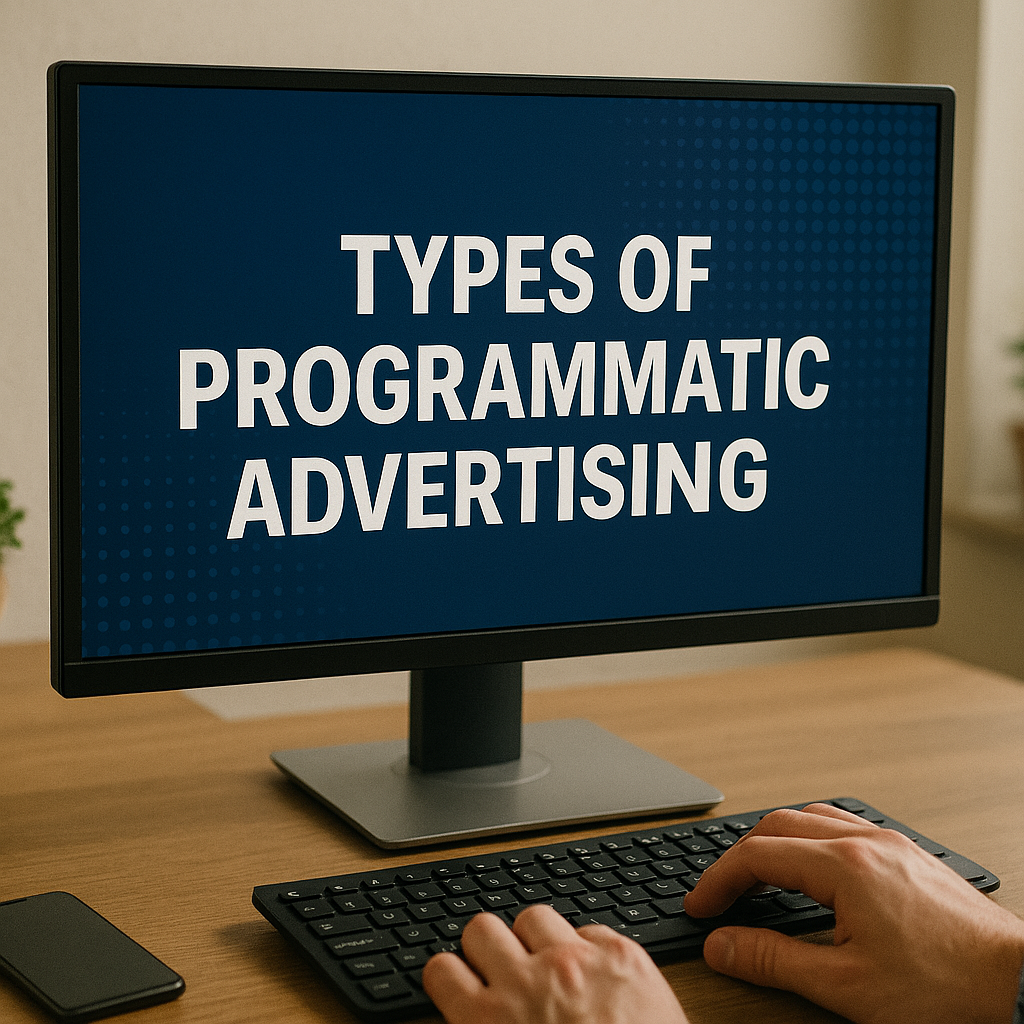In today’s fast-paced digital world, businesses need smarter, faster, and more efficient ways to reach their target audiences. That’s where programmatic advertising comes in. The Beginner’s Guide to Programmatic Advertising in 2025, If you’ve heard the term but aren’t quite sure what it means or how it works, you’re in the right place.
This beginner’s guide will break down programmatic advertising in simple terms, explain how it benefits businesses, and show you how to get started.
What Is Programmatic Advertising? (The Beginner’s Guide to Programmatic Advertising in 2025)

Programmatic advertising is the automated buying and selling of digital ad space in real time. Instead of manually negotiating ad placements with publishers, businesses use software and algorithms to purchase ads across websites, apps, and social media platforms instantly.
Think of it like stock trading—but for ads. The process happens in milliseconds, ensuring the right ad reaches the right person at the right time.
How Does Programmatic Advertising Work?
Programmatic advertising relies on real-time bidding (RTB), artificial intelligence (AI), and vast amounts of data to place ads efficiently. Here’s a simplified breakdown:
- A User Visits a Website – When someone opens a webpage, an ad space becomes available.
- An Ad Auction Happens Instantly – The publisher’s ad exchange sends out a bid request to advertisers.
- Advertisers Bid in Real-Time – Using data like demographics, browsing behavior, and interests, advertisers place automated bids.
- The Winning Ad is Displayed – The highest bidder’s ad appears on the user’s screen—all in less than a second!
Key Players in Programmatic Advertising
To understand programmatic advertising fully, you should know the main components involved:
- Demand-Side Platform (DSP) – A tool advertisers use to buy ad inventory across multiple publishers.
- Supply-Side Platform (SSP) – A platform publishers use to sell their ad space to advertisers.
- Ad Exchange – A digital marketplace where DSPs and SSPs connect to buy and sell ads.
Data Management Platform (DMP) – Collects and analyzes user data to help advertisers target the right audience.
Why Use Programmatic Advertising?

Programmatic advertising offers several advantages over traditional ad buying:
1. Precision Targeting
With access to first-party and third-party data, programmatic ads can target users based on:
- Demographics (age, gender, location)
- Interests and online behavior
- Purchase intent
- Device type (mobile, desktop, tablet)
This means less wasted ad spend and higher conversion rates.
2. Real-Time Optimization
AI and machine learning analyze ad performance in real time, adjusting bids and placements to maximize ROI.
3. Cost Efficiency
Since bidding happens automatically, you only pay for impressions that matter—no overpaying for underperforming ads.
4. Massive Reach
Programmatic ads can run across thousands of websites, apps, and platforms simultaneously, increasing brand visibility.
5. Transparency & Control
Advertisers get detailed insights into where their ads appear, who sees them, and how they perform.
Types of Programmatic Advertising

Programmatic isn’t just one thing—it comes in different forms:
1. Real-Time Bidding (RTB)
The most common type, where ads are bought and sold in auctions in milliseconds.
2. Private Marketplace (PMP)
An invite-only auction where premium publishers offer ad space to select advertisers.
3. Programmatic Direct
Advertisers buy guaranteed ad space directly from publishers at a fixed price (no auction).
4. Header Bidding
Multiple SSPs bid on ad space simultaneously before the page loads, increasing competition and publisher revenue.
Getting Started with Programmatic Advertising
Ready to dive in? Follow these steps:
1. Define Your Goals
- Do you want brand awareness, leads, or sales?
- Set KPIs like CTR (click-through rate), conversions, or ROAS (return on ad spend).
2. Choose the Right DSP
Popular options include:
- Google Display & Video 360
- The Trade Desk
- Amazon DSP
- MediaMath
3. Set Your Budget
Start small—test different audiences and creatives before scaling.
4. Target the Right Audience
Use DMPs to refine targeting based on:
- Location
- Interests
- Past interactions with your brand
5. Create Engaging Ads
- Use high-quality visuals (banners, videos, native ads).
- Write compelling ad copy with clear CTAs.
- A/B test different versions to see what works best.
6. Monitor & Optimize
Track performance metrics and adjust bids, audiences, and creatives to improve results.
Common Challenges (& How to Overcome Them)

While programmatic advertising is powerful, it’s not without challenges:
- Ad Fraud – Use fraud detection tools like IAS or DoubleVerify.
- Brand Safety – Block ads from appearing on low-quality or inappropriate sites.
Data Privacy Compliance – Follow GDPR and CCPA regulations when collecting user data.
Final Thoughts
Programmatic advertising is a game-changer for digital marketers. It offers speed, precision, and efficiency that traditional methods can’t match. By leveraging automation and data, businesses can reach the right audience at the right moment—without wasting time or money. If you’re new to programmatic, start small, test different strategies, and scale what works. The future of digital advertising is here—are you ready to take advantage of it?

